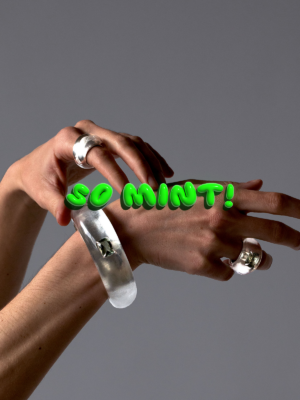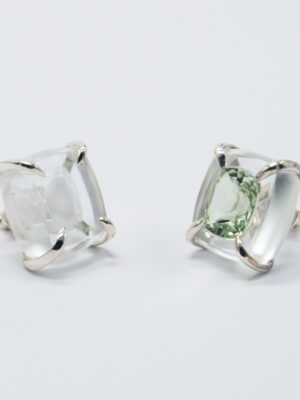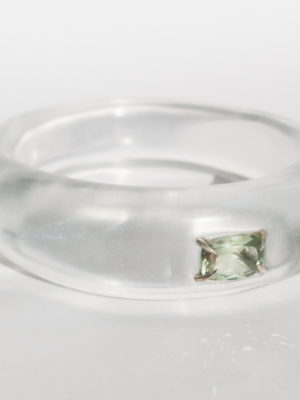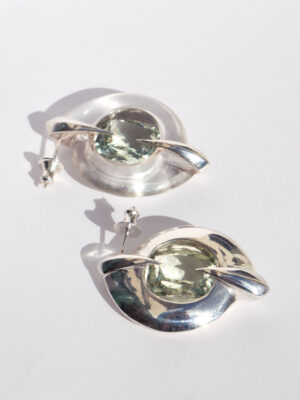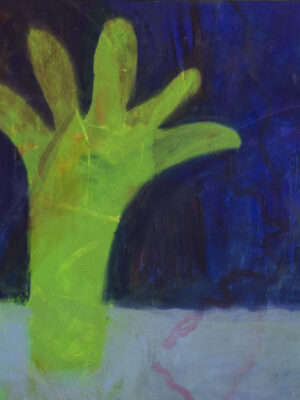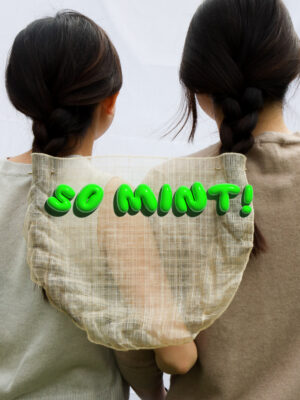Hannah Schofield is a London-based designer whose work focuses on sustainability, traditional techniques, and beautification, while also challenging conventional notions of value. Her practice repurposes discarded materials, particularly glass, transforming them into fine jewellery. Her designs are characterised by a minimalist aesthetic, emphasising transparency, negative space, and the dynamic interplay between glass and metal. The presence of bottles and glasses is almost imperceptible, revealed only through subtle details. Schofield aims to elevate these everyday objects into something precious, encouraging us to appreciate what is often overlooked in daily life.
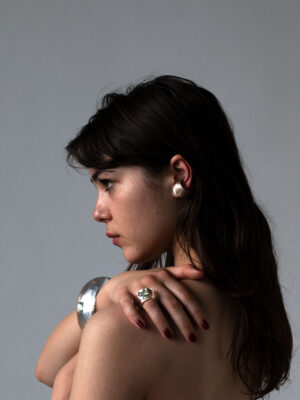
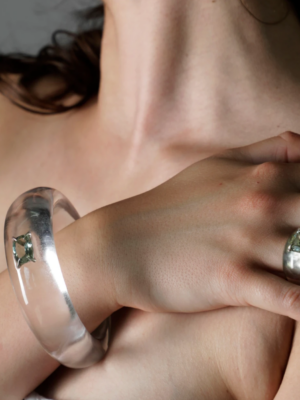
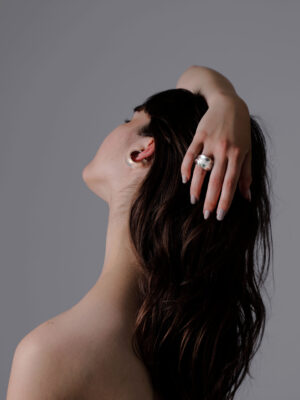
CO: What ideas or themes inspire your work?
HS: I became fascinated by the effects of intaglio engraving, an ancient technique where an image is carved in reverse, originally used for stamps and seals. During my apprenticeship with a master engraver, I learned this art and how to work with precise detail on the depth and relief to bring clarity to the illustrations. When used on transparent materials, this technique creates the illusion of the image floating within the clear surface. It was through this practice that I became drawn to transparency, inspiring my focus on working with negative space in design.
My graduate collection explores how the perspective of an image can shift through the refraction of clear surfaces. Different forms can affect how the details and surroundings are distorted. Using recycled glass adds to this theme of distortion by placing the discarded material into fine jewellery. The preconceived value of glass is challenged in the context of preciousness. These pieces redefine the value of the material while also aligning with my commitment to more sustainable processes.
HS: Glass doesn’t hide any imperfections, so it has been gratifying to work with a material that leaves no room for error. Every angle must be carefully considered, allowing for emphasis on specific details and the play of perspectives. The main challenge is the fragility of glass. As referenced in my graduate collection title, the sampling process has resulted in many breakages. I’ve developed a great deal of patience working with recycled glass, and it gives me an incredible sense of achievement when an idea succeeds. The process tests the wearability and strength of the design from the very first carving, so any weak areas are immediately exposed.
Some of the shapes and forms of these pieces were dictated by the making—and breaking—process. The Fragmented series, for instance, began with a broken ring, which inspired the idea of resetting segments using tension. Working with fragile materials brings an element of unpredictability, but through this, I’ve been able to continuously learn, adapt, and challenge traditional ways these materials have been used in design.
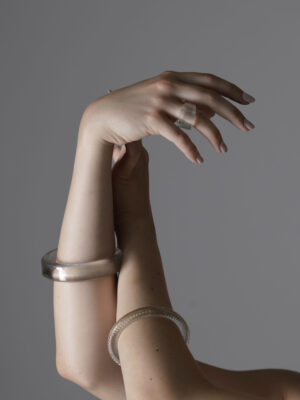

HS: My approach has been shaped by a focus on sustainability and a desire to highlight traditional craftsmanship in jewellery making. I am particularly mindful of waste during the sampling process and while practising techniques. To develop my stone carving abilities, I began experimenting with smashed bottles and was amazed by their transformation. This has allowed me to give new life to recycled materials by incorporating them into luxury goods. This focus is especially relevant today, as the design industry moves towards more sustainable practices.
Through this project, I have redefined the value of overlooked materials. By incorporating carving, engraving, and semi-precious elements, I aim to challenge preconceived notions of value associated with recycled glass. My work merges traditional craftsmanship with modern aesthetics, striving to elevate discarded materials and transform perceptions of preciousness. By blending ancient techniques with contemporary design, I push the boundaries of conventional jewellery, redefining the value of glass through traditional craft.

Web site: Hannah Schofield
All featured images are courtesy of the artist.
